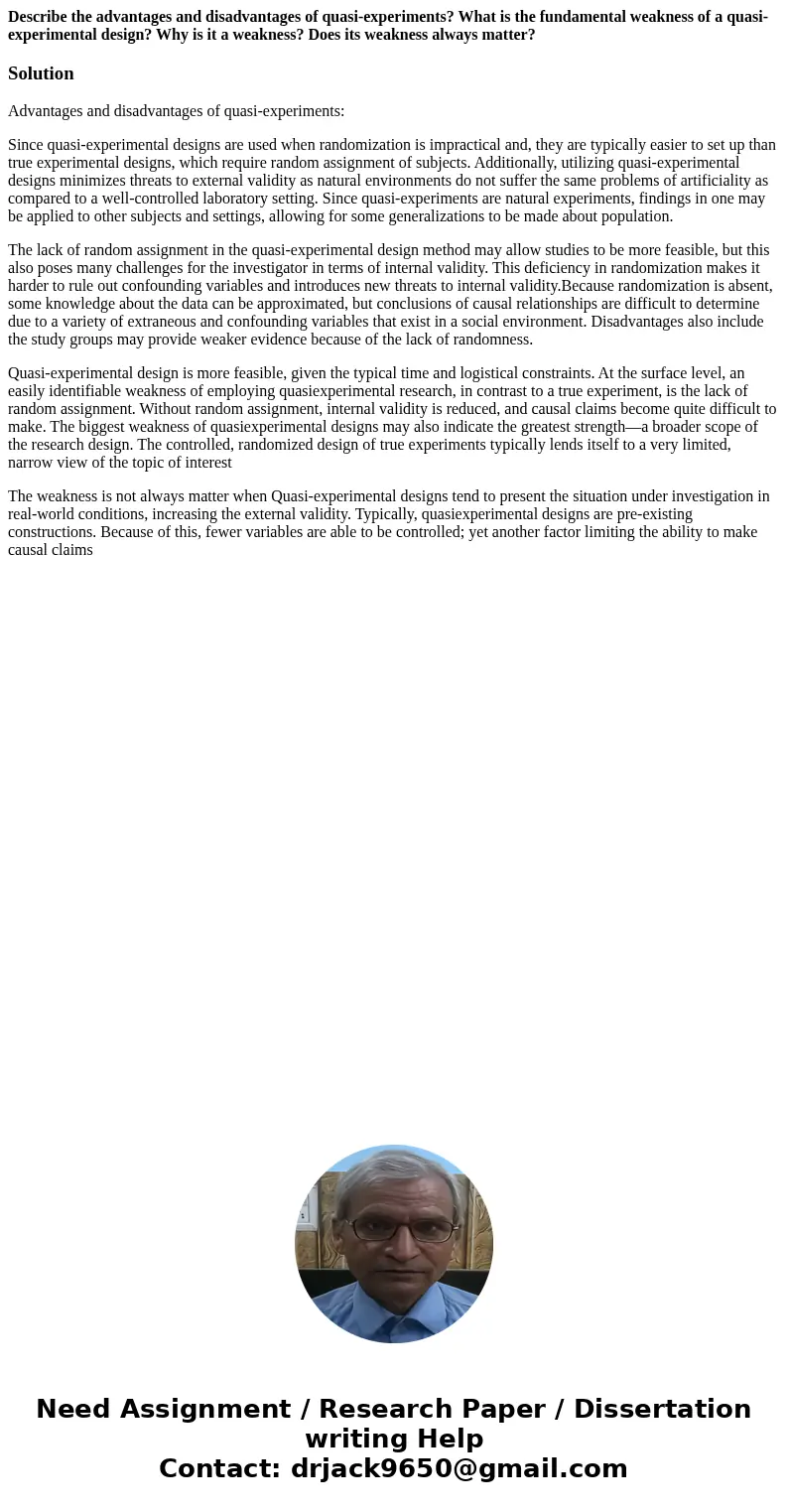Describe the advantages and disadvantages of quasiexperiment
Describe the advantages and disadvantages of quasi-experiments? What is the fundamental weakness of a quasi-experimental design? Why is it a weakness? Does its weakness always matter?
Solution
Advantages and disadvantages of quasi-experiments:
Since quasi-experimental designs are used when randomization is impractical and, they are typically easier to set up than true experimental designs, which require random assignment of subjects. Additionally, utilizing quasi-experimental designs minimizes threats to external validity as natural environments do not suffer the same problems of artificiality as compared to a well-controlled laboratory setting. Since quasi-experiments are natural experiments, findings in one may be applied to other subjects and settings, allowing for some generalizations to be made about population.
The lack of random assignment in the quasi-experimental design method may allow studies to be more feasible, but this also poses many challenges for the investigator in terms of internal validity. This deficiency in randomization makes it harder to rule out confounding variables and introduces new threats to internal validity.Because randomization is absent, some knowledge about the data can be approximated, but conclusions of causal relationships are difficult to determine due to a variety of extraneous and confounding variables that exist in a social environment. Disadvantages also include the study groups may provide weaker evidence because of the lack of randomness.
Quasi-experimental design is more feasible, given the typical time and logistical constraints. At the surface level, an easily identifiable weakness of employing quasiexperimental research, in contrast to a true experiment, is the lack of random assignment. Without random assignment, internal validity is reduced, and causal claims become quite difficult to make. The biggest weakness of quasiexperimental designs may also indicate the greatest strength—a broader scope of the research design. The controlled, randomized design of true experiments typically lends itself to a very limited, narrow view of the topic of interest
The weakness is not always matter when Quasi-experimental designs tend to present the situation under investigation in real-world conditions, increasing the external validity. Typically, quasiexperimental designs are pre-existing constructions. Because of this, fewer variables are able to be controlled; yet another factor limiting the ability to make causal claims

 Homework Sourse
Homework Sourse